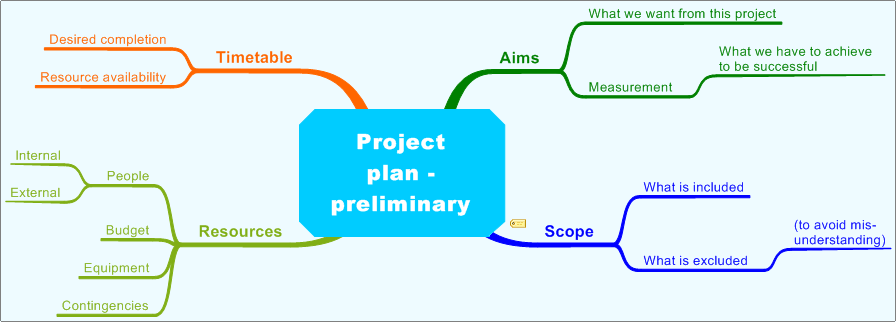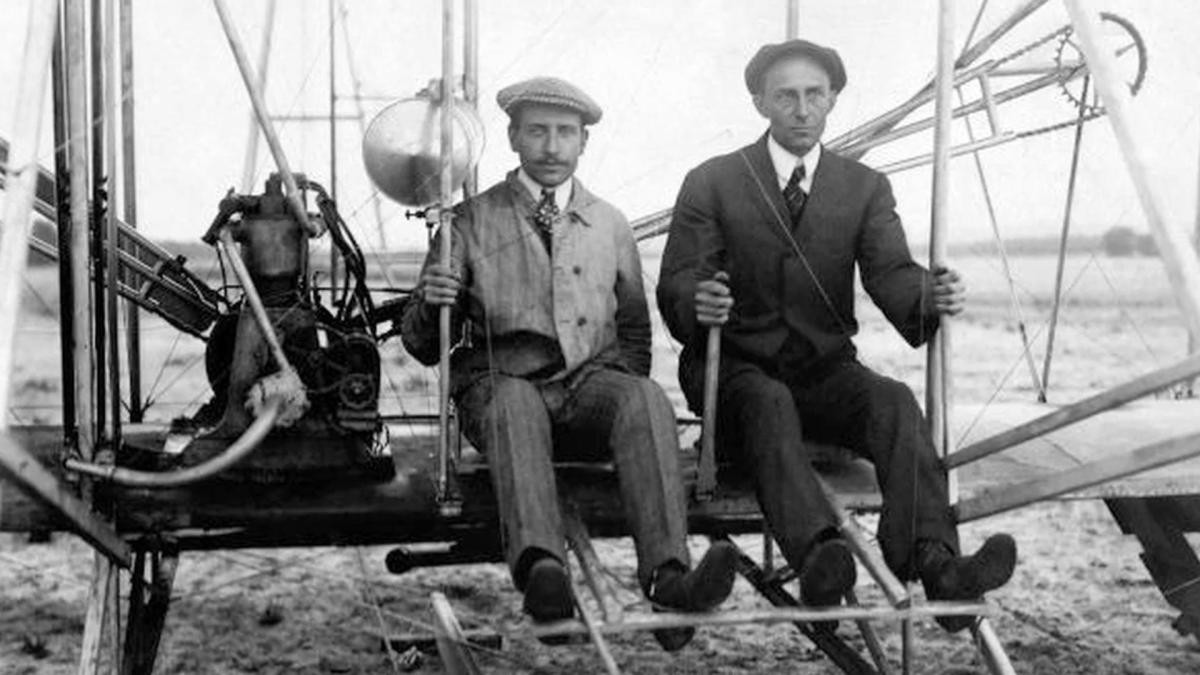Articles & Events, IT
Project Management techniques: Brainstorming
Brainstorming
PMBOK®Definition: “A general data gathering and creativity technique that can be used to identify risks, ideas, or solutions to issues by using a group of team members or subject-matter experts. Typically, a brainstorming session is structured so that each participant’s ideas are recorded for later analysis”.

Brainstorming, is the name given to a situation when a group of people meet to generate new ideas around a specific area of interest. Using rules which remove inhibitions, people are able to think more freely and move into new areas of thought and so create numerous new ideas and solutions. The participants shout out or capture ideas as they occur to them and then build on the ideas raised by others. All the ideas are noted down and are not criticized. Only when the brainstorming session is over are the ideas evaluated. It is a great project management technique to solve problems.

Here is where you’ll find brainstorming:
The Certified Associate in Project Management (CAPM)® and the Project Management Professional (PMP)® certifications, as well as A Guide to the Project Management Body of Knowledge (PMBOK® Guide) – Fifth Edition (PMI, 2013a) discusses brainstorming.
Well over 200 tools and techniques are listed in the PMBOK® Guide – Fifth Edition as possible resources to help the CAPM and PMP certification candidates through the 47 processes of a project. Brainstorming is mentioned six times total as a tool and technique in Project Integration Management, Project Scope Management, Project Risk Management, and Project Communications Management (PMI, 2013a).
The Program Management Professional (PgMP)® certification and The Standard for Program Management – Third Edition identify brainstorming as a core Knowledge Area (PMI, 2013b).
The Portfolio Management Professional (PfMP)® certification and The Standard for Portfolio Management – Third Edition mention brainstorming three times as a tool and technique: in Develop Portfolio Management Plan, Develop Portfolio Performance Management Plan, and Develop Portfolio Communication Management Plan (PMI, 2013c).
The PMI Agile Certified Practitioner (PMI-ACP)® certification and its Examination Content Outline (PMI, 2014) identify brainstorming as an essential knowledge and skill.
The PMI Professional in Business Analysis (PMI-PBA)® certification and the PMI Professional in Business Analysis (PMI-PBA)® Examination Content Outline (PMI, 2013d) identify brainstorming as a tool to assist in problem solving and opportunity identification in Domains of Stakeholder Engagement and in Risk Process Facilitation.
Creativity can be defined as the production of something new that serves a purpose. One of the most validated methods for fostering creativity is called Creative Problem Solving (CPS) (Puccio, Firestien, Coyle, & Masucci, 2006).
How it works.
Two types of thinking skills are used in creative problem solving—divergent and convergent thinking. Divergent thinking focuses on generating options whereas convergent thinking focuses on narrowing or selecting options.
Brainstorming is one of many research-based divergent thinking tools. Used correctly, the tool can unleash the obvious ideas/solutions and to help the group arrive at ideas that would otherwise go unknown. Brainstorming can help groups be deliberately creative in the production of ideas.
Without being explicit, the PMBOK® Guide’s definition of brainstorming captures both types of thinking skills. The first sentence of the PMBOK® Guide’s definition draws attention to generating ideas: divergent thinking and the second sentence talks about evaluating ideas convergent thinking (PMI, 2013a).

The PMBOK® Guide defines brainstorming as a technique used to generate and collect multiple ideas related to project and product requirements. Although brainstorming by itself does not include voting or prioritizing, it is often used with other group creativity techniques that do (PMI, 2013a).
That’s a lovely definition. But it does not give any of the foundational methods of divergent thinking for innovation and idea generation any justice.
So what are the rules to Brainstorming?
In 1963, Osborn wrote his classic book, Applied Imagination which detailed the brainstorming procedure and the initial creative process. In Applied Imagination, Osborn put forth the guidelines for generating ideas in a group setting, also known as the guidelines for brainstorming. The following are Osborn’s four specific guidelines for the successful use of the brainstorming technique.
1, Defer judgment. Criticism is ruled out; adverse judgment of ideas must be withheld until later:
Deferring judgment is the most important guideline to keep in mind when generating ideas. However, deferring judgment asks us to unlearn some of the typical ways we have been taught to think about an idea. From a very early age we learned that as soon as we thought of an idea, we needed to judge whether it was good or bad, right or wrong, safe or unsafe. But, in generating new ideas and new ways to solve problems, we must hold off our judgment or review for a time until we have a number of ideas from which to choose
Tip: Ideas are not action! One of our biggest challenges in teaching people to defer judgment when they generate ideas is that they confuse ideas with action. An idea is just that, an idea; it is not an action. An idea is a potential action that might be taken later, after careful evaluation. But it is not an action when it is generated. Therefore, it needn’t be feared or prematurely discarded.
2, Strive for quantity. The greater the number of ideas, the greater the likelihood of developing useful ideas:
The question is, how many ideas do you have to produce to get a good one? Do you have to come up with hundreds of ideas to generate one good candidate? It all depends on the kinds of ideas you want.
If you want to find ways to improve your current methods, you will need fewer ideas than if your goal is to completely redefine the nature of your business or your life. If you want to break out of your current patterns and create some major breakthroughs, then you will need significantly more ideas than if you want to make some incremental improvement on an existing process or procedure.
Tip: We can’t precisely predict the number of ideas you will need, but setting a quota for ideas generated helps. Between forty to fifty ideas is a good quota if you want to generate ideas to improve your current methods. More than fifty ideas will help you begin to really stretch your thinking, but if you want to completely redefine the work you are doing and create some exotic ways to approach a problem, a quota of 100 ideas or more is not unreasonable. We have found that in sessions where hundreds of ideas are generated, the last 20 percent really begin to “push the envelope.”
You might be thinking: 100 ideas? How much time is it going to take my group to generate 100 ideas?
3, Welcome “freewheeling.” The wilder the idea, the better. It is easier to tame down than to think up:

Freewheeling encourages us to generate unusual ideas and emphasizes that it is easier to tame down a wild idea than it is to invigorate a weak one. When working with various groups—from students in our classes to corporate presidents—we have found that freewheeling is one of the most difficult idea-generating guidelines to apply.
This is particularly true when groups are working on a problem that is important to them. When we ask members of a brainstorming group how many wild ideas they’ve come up with, they generally respond, “This is a serious problem. We can’t do something outlandish.”
Consider this statement; We asked about the ideas they generated, not the actions they’re planning to take. Ideas are not actions.
Tip: The purpose of a brainstorming session is to generate ideas—just ideas—not to take action. Ideas become actions only when you take the time to select, develop, refine, and then do something with them. There is a time for selecting and refining ideas; but at the idea-generation phase, absolutely anything goes. When you are generating ideas, don’t worry if your ideas seem outlandish, far-fetched, or even foolish. It may well be that one of these “outlandish” ideas becomes the core of a major breakthrough.
4, Seek combination and improvement. How can the ideas of others be turned into better ideas? How can two or more ideas be fused into still another idea?
The technique of combination and improvement is also known as building. In addition to contributing ideas of their own, participants should suggest how the ideas of others can be turned into better ideas, or how two or more ideas can be joined into still another idea. Building occurs when problem solvers add to or improve the ideas generated by others in the group. Building happens almost naturally in a smoothly functioning brainstorming session.
Tip: Check your ego at the door. To allow building to occur, it is important to leave your ego out of an idea-generating session. When your ego begins to attach itself to an idea that you contributed, you will be less likely to want others to improve your idea. You will also want to claim that idea in later stages of the process. When we talk to people who have participated in a highly productive brainstorming session, most don’t even recall which ideas they contributed and who built on those ideas.
Building is crucial. The Wright brothers were the first to effectively control heavier-than-air-powered flight, but what would have happened if no one had built on that idea? Would you rather fly in a Wright flyer?


Are Quantity and Quality Related?
So you may be thinking? Are quantity and quality really related? If I conduct a brainstorming session and come up with a bunch of crazy ideas, how do I know I will get any good ones? Research says the good ideas are the ones the group arrives at near the end of a divergent thinking session.
Perhaps the chief mistake made when using the tool is that we stop too soon. All too often, when the group starts to quiet down, silence is interpreted to mean the group has arrived at the end of the idea train; this is not so!
How to organize Brainstorming. Four steps to effective brainstorming:
1 Lay out the problem you want to solve.
The general principle of this technique is to separate idea generation from discussion. If you’ve ever participated in a brainstorming session, you’ll know that a team leader or manager opens the discussion by providing the problem’s background, stating any goals that need to be reached and criteria that must be followed. Once participants are filled in on the most important details, they are allotted a few moments to think and write out their solutions to solve the problem.
2 Identify the objectives of a possible solution.
Discuss as a group the general objectives of a possible solution, do not reject any idea.
3 Try to generate solutions individually.
Encourage he team members individually write down their ideas. This helps eliminate anchoring and encourages everyone on the team to share their own ideas. It also gives everyone more time to think over their ideas, which is especially helpful for your introverted participants. This brainstorming technique works best for teams who seem to be greatly influenced by the first ideas presented during a meeting.
When you get your team to brainstorm ideas individually, away from distraction and public opinion, concepts are generated that may not naturally surface when in a larger setting. Individual brainstorming techniques such as this will often give you more unique ideas than when the group is left to think up topic ideas.
Some group approaches can include:
Reverse Brainstorming:

So, the solution to “forcing attendees to wait a long time at registration” would be “staff the registration desk with several greeters to minimize wait times.”
Mood Boards:
The majority of humans are visual learners, 65 percent, in fact. And it all comes down to the way our brains analyze information. Compared to text, the human brain processes an image 60,000x faster than text.
Which means that the trick to igniting a firestorm of creativity from your staff, may just reside in a visual brainstorming tool: the mood board.

Word games:
Do you have a new team? Or, are you searching for a high-energy activity to jumpstart a brainstorming session? If you answered yes then try a brainstorming game.
An easy one to try is a word game. Simply write down a random word then have your staff brainstorm a series of related words and phrases. Get them thinking about verbs and nouns associated with it, its antonyms, synonyms, how it’s used in a sentence, and it’s function.
Once you’ve written out all of your staff’s ideas, cluster them into groups according to their relationship to each other. The end result is to find a unique phrase or an association for that word.
If this sounds like an exciting brainstorming activity, try playing it with a baton. Toss the baton around the room and collect the first words, ideas, and phrases that come to mind.
Mind mapping:
If you have new large project break it down into bite-sized pieces with mind mapping. A useful brainstorming technique, mind mapping visually demonstrates how a project’s components / phases fit together, you can initially use the approach to develop the phases required and then the detail within each phase.
To begin, start with a central idea or theme, then draw lines out from the centre and label them with headings that represent categories and important facts. As you uncover more information, draw new lines from the appropriate headings and label them accordingly.
Once you have gotten clear on your problems, your objectives and your personal solutions to the problems, work as a group.
What happens next should be a vibrant discussion, full of innovative ideas, sometimes wild and sometimes wacky. However, with numerous people in the room and everyone bubbling with thoughts and opinions, there is a chance for things to go awry.
Quieter voices could be drowned out by eager, louder ones. Or it could be that everyone in the room is anxious and unwilling to share his ideas for fear they’ll be rejected. While brainstorming sessions are great tools to get an entire team involved in a project, they could be alienating.
In Conclusion
Brainstorming techniques are great ways to tackle problems. And, with the right brainstorming techniques, you will create a fun, relaxed environment that will inspire your colleagues to come up with fantastic out-of-the-box solutions.
Do you use brainstorming techniques? If so, tell us about effective brainstorming examples in the comments below:


Like!! Great article post.Really thank you! Really Cool.